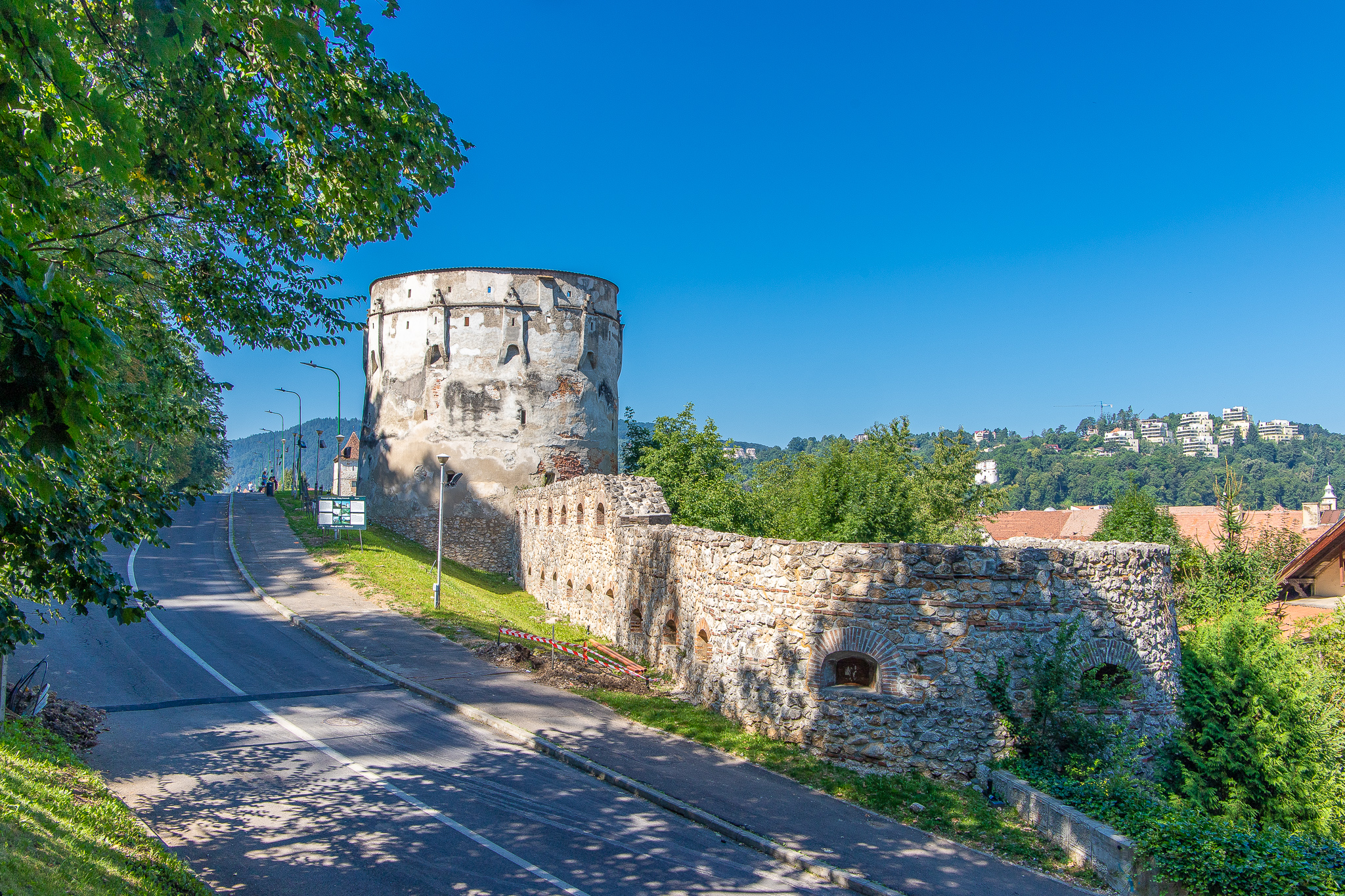Ringed by the Carpathian Mountains in Transylvania is Romania’s 7th largest city Brașov. Boasting a beautiful cobbled old town with colourful barouque buildings and more than one imposing church, the city is more often than not used as a staging post by tourists for an assault on Bran Castle, once home to Vlad the Impaler. However, you’re missing out on this fabulous city if you simply pass through and it is well worth the time spent to explore every inch of a place that teems with medieval wonders.
One of the first things you’ll notice when arriving in Brasov is the huge sign reminescent of Hollywood. Situated on the top of mount Tâmpa, it can easily be reached by cable car leaving from Casa Pădurarului and provides wonderful views back of the down below. Rather than take the cable car, a better idea is to get the heart beating and hit the trails which lead up to the sign. It’s a serene walk (or run) and with few other people prepared to slog their way up, it’s also a great place to get some solitude.
Not quite Hollywood
The city is centred around Piaţa Sfatului (Council Square) and Casa Sfatului, a former town hall which is now a history museum. The whole square was cordoned off for an upcoming event when we were there which unfortunately detracted from its beauty but with plenty of other cafes and eateries in the streets leading away from the square, we still were well looked after in that regard.
Casa Sfatului
Brasov is probably best known for its extremely well preserved medieval Saxon walls and bastions. The walls were mostly between the 15th and 17th centuries in an effort to keep out marauding enemies. When fully in use, the southern walls at the foot of Tampa Mountain used to be 12 metres high and two metres thick. These days what we mostly see are reconstructed walls with wooden walkways that can be accessed placed on top.
Built into the southern walls are six bastions, of which three (Turnul Artelor, Turnul Vanatorilor and Bastionul Postavarilor) are open to the public. Supposedly Turnul Vanatorilor offers the best views of the city and walking along the pleasant promenade allows you to pick your own favoourite.
Drapers Bastion
Turnul Artelur
The final bastion on show is Bastionul Țesătorilor and just around the corner are some clay tennis courts with what looked like some of the coolest clubrooms in existence but which also double up as the Transylvanian Sports Museum, known also as the Olimpia Sports Base.
Tennis anyone?
If you’re into beautiful churches and steeples, then the Romanian Orthodox Saint Nicholas Church should definitely be on your agenda. First established established in 1292, it was rebuilt in stone in 1495 in Gothic-style before being redecorated later with a range of Baroque-style elements in the 18th century.
St Nicholas Church
Exterior paintings at St Nicholas Church
Sitting to the side of the church is the First Romanian School where Romanian language was used in teaching in 1583. Villages from around Transylvania each paid for one student to attend the school, who would then be responsible for sharing their eduction with other children in the village when they returned. The school is now a museum which was shut when we arrived and in addition to a library which contains 6,000 books used in the school, it also contains the first Romanian printing press. The school had a pretty good run and remained in use up until 1850.
First Romanian School
Outside the school resides a statue of the Romanian printer Diaconul Coresi (who was editor of some of the earliest printed books in the Romanian language.
Coresi’s statue
Heading back to the Council Square, there are plenty of interesting buildings en route such as the one below at Parcul Gheorghe Dima.
Building outside Parcul Gheorghe Dima
My favourite, however, is the stone gate Poarta Ecaterinei, known in English as Catherine’s Gate. Named after Saint Catherine’s Monastery that used to be situated on the site, the gate was built in 1559 by the Tailor’s Guild for defensive purposes and is the only original city gate to have survived from medieval times. Here, also, there are four small corner turrets showing all that the town had the "right of sword" in which to decide on capital punishment.
St Catherine’s Gate
A number of other main tourist attractions await just round the corner from Catherine’s Gate, including the northern bastion walls with the Black Tower perhaps being the best. And, of course, the famous 600-year old Black Church which is the largest hall-church east of Vienna and got its name in 1689 after it was partially destroyed during fires set by an invading Habsburg army.
Having seen most of the citiies central attractions, it was time to refuel and regroup before checking more sights in Brasov.












